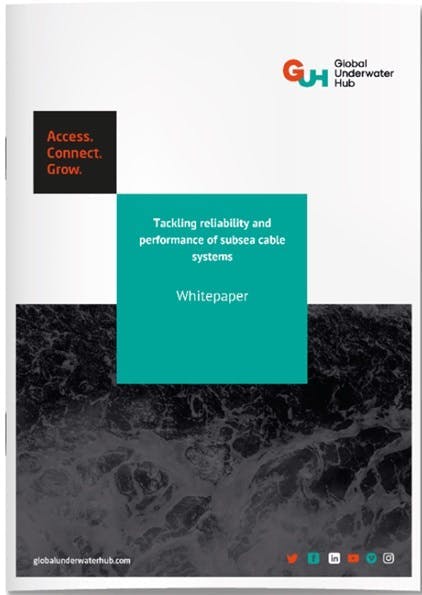Subsea cable forum would address UK’s offshore wind capacity constraints
Britain’s Global Underwater Hub (GUH) has published a whitepaper on ways of improving the performance of subsea cable systems connected to offshore wind farms.
The UK government aims to have 50 GW of installed offshore wind capacity by 2030.
EXCLUSIVE CONTENT:
Geoquip Marine conducted more than 1,797 tests and submitted the final geotechnical data report to Gennaker offshore wind project owner Skyborn Renewables 47 days ahead of contractual deadlines.
GUH CEO Neil Gordon said, “This scale of expansion, in both fixed and floating offshore wind, can only be achieved by installing and maintaining hundreds of thousands of kilometres of reliable subsea cables…But these cables are highly susceptible to damage during installation and operation, leading to substantial insurance claims and costly downtime.”
GUH sees resolving cable performance and reliability as an imperative. The planned wave of floating offshore wind developments in UK waters will require more complex dynamic cables, the paper notes.
“Cable reliability not only makes offshore wind projects more economically viable but also ensures the energy supply is uninterrupted,” Gordon said.
But there are other issues that need to be addressed, he stressed, notably local supply chain constraints and rising costs.
“Unlike fixed offshore wind, floating offshore wind has few standards and no established supply chain. Starting with this ‘clean slate’ and leveraging the vast experience over five decades in offshore oil and gas, the UK has an opportunity to create a new generation of products and services that will unlock this emerging sector.”
Forum aims to avoid duplication of efforts, drive innovation
GUH’s whitepaper addresses how the UK could overcome the constraints, in part through the creation of the UK Subsea Cable System Forum.
This would have a remit to ensure that the supply chain can influence standards and policy to improve reliability, cost effectiveness and quality of cable systems supplied in the UK.
The forum, led by an industry steering committee and working with partners throughout the sector, would drive innovation and improvements in systems-based design, data sharing and quality control.
“This, in turn, will ensure that the UK becomes well positioned as an authoritative center of excellence for reliable subsea cable systems and solutions that enhance the economic viability of offshore wind projects and accelerate the development of floating offshore wind,” Gordon said. “Ultimately, the holistic approach by the UK Subsea Cable System Forum will avoid duplication and foster the collaboration needed to deliver the standards required for a new generation of products and services to the global floating offshore wind market.”
GUH subsea engineering survey
According to Gordon, there was welcome news in December 2024 that the UK subsea sector has grown 15% over the 2023/24 period. However, he said, this growth story was muted somewhat with industry stakeholders believing that 62% of project timelines will be missed.
GUH recently revealed the findings from its 2024 Business Survey. Overall, there is a more positive assessment of supply chain capacity compared to the previous year and, generally, market prospects remain high, driven by the wide range of opportunities across all markets, most notably in offshore energy where subsea engineering expertise is in high demand. Read more.
About the Author
Jeremy Beckman
Editor, Europe
Jeremy Beckman has been Editor Europe, Offshore since 1992. Prior to joining Offshore he was a freelance journalist for eight years, working for a variety of electronics, computing and scientific journals in the UK. He regularly writes news columns on trends and events both in the NW Europe offshore region and globally. He also writes features on developments and technology in exploration and production.


